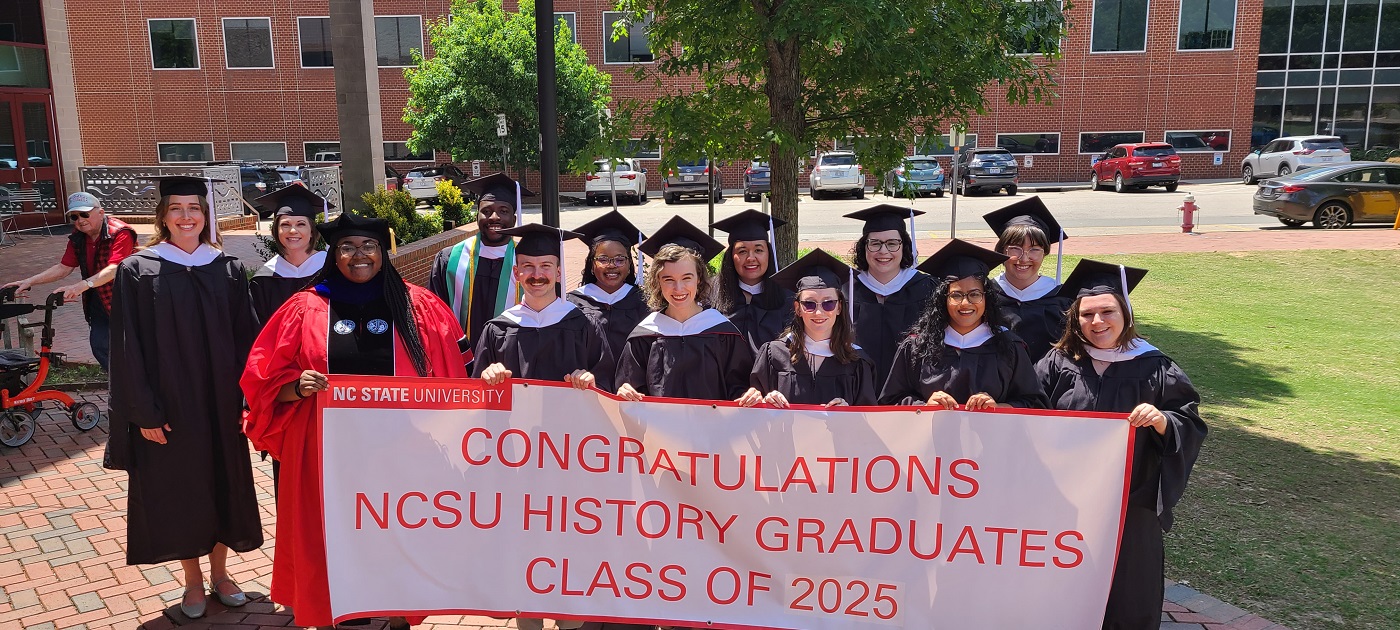Chancellor Serves as Land Grant Historian
North Carolina State University, first known as the North Carolina College of Agriculture and Mechanic Arts, was established as a land grant university in 1887.
And since being founded, NC State has upheld its mission to serve the state of North Carolina through innovation, research and extension. In 2014, for instance, the Association of Public and Land-grant Universities designated NC State as an Innovation and Economic Prosperity University, an award that recognizes the university’s longstanding tradition as “an innovative university that creates economic prosperity.”
But what exactly are land grant universities, and why are they important to the health of the United States?
NC State Chancellor Randy Woodson recently answered those questions as a guest lecturer in History professor Matthew Booker’s new course — U.S. Agricultural History (HI 360).
Booker said that he offered the course after students asked for it.
“Despite the university’s deep roots in agriculture, the history department has no dedicated agricultural historian and has not offered such a course since 1979,” Booker said. “Now that HI 360 is in the catalog, we hope this will become a regular offering.”
The class is certainly popular: it filled up in the first week of registration. Seventy students representing a cross section of NC State’s undergraduate majors signed up to investigate the major problems and trends in America’s agrarian past in order to better understand the country’s agricultural present and future.
As it turns out, a fundamental key to understanding America’s position as a leading producer of agricultural technology and products today is the nation’s adoption of the land grant university system more than 150 years ago. And no one knows the story of the land grant better than HI 360’s guest lecturer for the day, Chancellor Woodson.
Before being named the university’s 14th chancellor in 2010, Woodson served as the executive vice president for academic affairs and provost at Purdue University, a land grant university founded in May 1869. While at Purdue, Woodson served in a variety of faculty and administrative roles, including director of the plant biology program, head of the Department of Horticulture and Landscape Architecture, associate dean of agriculture and director of the Office of Agricultural Research Program, and dean of Agriculture. Woodson served as chairman of the Association of Public and Land-grant Universities for the 2013-2014 year, giving him a national perspective on the role of public universities in the U.S.
TIMELINE: NC State’s Land Grant
Chancellor Woodson returned to his teaching roots as a guest lecturer, offering his perspective on the past, present and future of U.S. land grant universities to students taking U.S. Agricultural History. He surveyed the early efforts of farmers and legislatures to lobby for the establishment of farm schools for the industrial class in the 1850s, as well as the challenges of getting legislation passed through Congress. On July 2, 1862, President Abraham Lincoln signed the Morrill Act, which provided a national land scrip endowment for the establishment of a land grant college in each state.
In addition to the Morrill Act’s impact across the nation, Woodson also spoke specifically about the law’s application at NC State. The original land scrip endowment, Woodson explained, went to the University of North Carolina at Chapel Hill in 1875. However, UNC failed to establish the curriculum necessary for training students in agriculture or the mechanic arts.
In 1885, the Watauga Club, Leonidas Polk, the Pullen Society and other farming organizations lobbied the state legislature to transfer the land scrip to a new school which would focus on agricultural and mechanical arts education. Finally, on March 3, 1887, the state legislature transferred the land scrip to a proposed agricultural school to be built in Raleigh. This would become the North Carolina College of Agriculture & Mechanic Arts.
Woodson considers the Morrill Act one of the greatest pieces of legislation in U.S. history because it ensures national and state government interest in the success of public education. Additional federal laws passed in 1887 and 1914 respectively provided funds for the establishment of agricultural experimental stations and cooperative extension projects at land grant universities. Together with the Morrill Act, these laws support the research and innovation that takes place at universities like NC State.
Woodson ended his talk with a Q&A. He addressed students’ further interests in the history of public education for farmers and the industrial class, the current research underway at NC State and the future of innovation at land grant universities.
- Categories:



